Best small guitar amps 2025: Compact tube, solid-state, and modelling amplifiers for stage, studio and practice
Because sometimes a hundred-watt head and a full stack is just too much amplifier
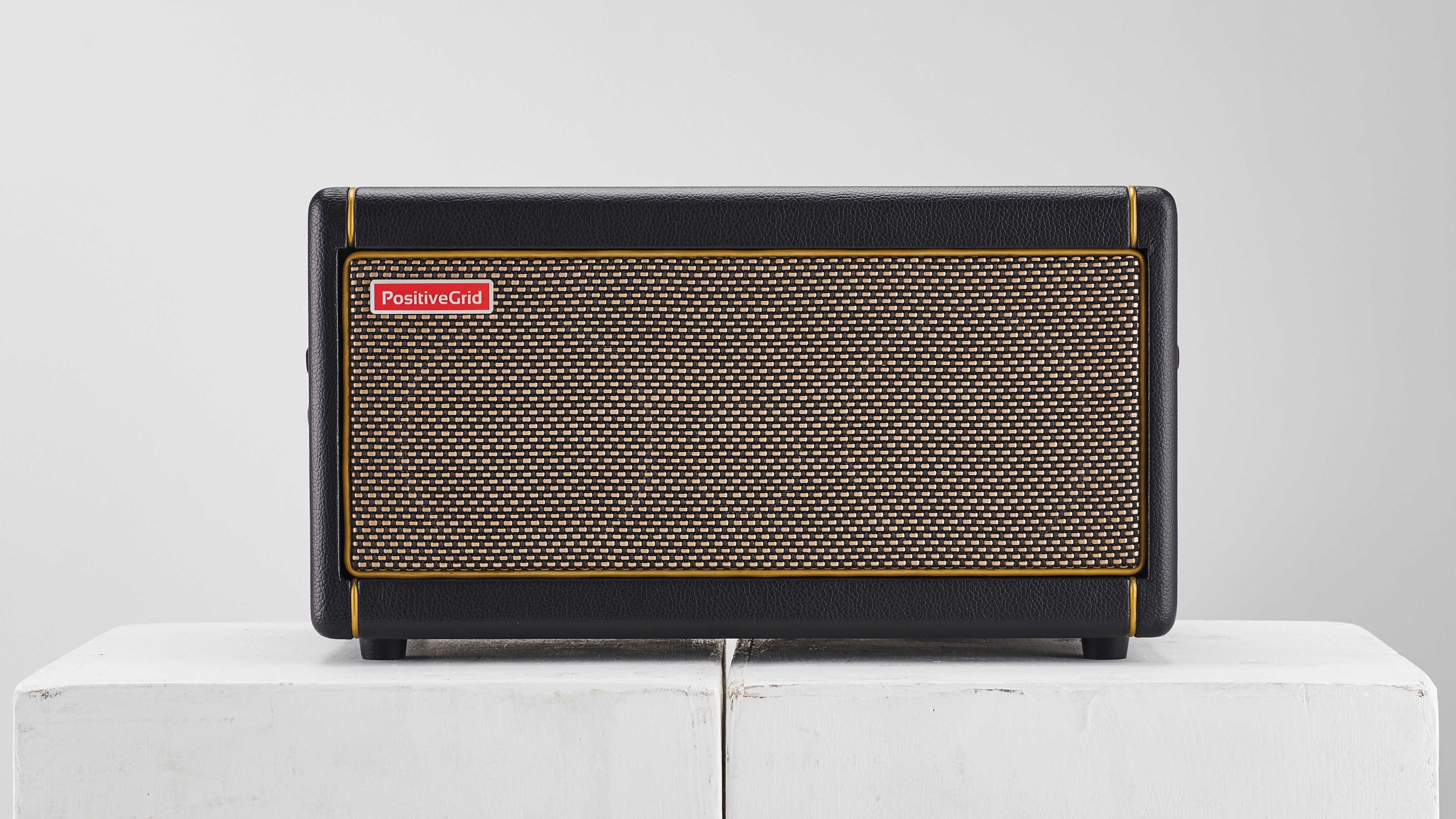
Once upon a time, every budding guitarist dreamed of playing onstage through a bank of 100W amp heads and a full stack of cabinets. But the world has changed and you can’t get away with stage volume like that any more. Besides, not all of our guitar playing is done on a stage. Big amps may have the romance but they’re no friend of the bedroom player, and they can even get in the way of a recording when you’ve got a nice old mic that you don’t want to overpower with decibels. That’s where the best small guitar amps come in.
What makes ’em small? Well, they’re portable and lightweight, they sound good at low volumes, and they don’t take up much space. In other words, they’re just the thing for the home, the office, or taking round to a friend’s house to work on some song ideas.
Best small guitar amps: Our top picks
A paradigm shift for the practice amplifier, the Positive Grid Spark takes the digital modelling concept and extends its functionality with the accompanying Spark app, which will transcribe your favourite songs or create jam tracks out of nothing, so that you always have ‘someone’ to play with. Very clever. Best of all, though, it sounds incredible, with heaps of amp and effects models to play with.
The Supro Delta King 8 provides a heady dose of electric blues and early rock ’n’ roll mojo, and all from a diminutive 1x8 format whose single watt of output will be enough to raise the hairs on the back of your neck without waking up the whole street. Yes, it’s a housetrained tube amp with a super-simple setup, and if you want something small and manageable but can’t get inspired without that genuine tube heat, this is where the action’s at.
Best small guitar amps: Product guide

Specifications
Reasons to buy
Reasons to avoid
No matter where you look, there are digital amplifiers boasting comprehensive suites of onboard amp and effects models. One such product is the Positive Grid Spark, which leans on the powerful BIAS modelling tech to provide 30 amp models and 40 onboard effects. These can be set up however you like, and you can even save your favourite sounds for instant recall. However, it’s with the Smart Jam and Auto Chords features where the Spark really takes off.
Having solved the age-old conundrum of how to deliver inspiring tones at household volumes – the Spark’s twin 4” speakers offering a very respectable full stereo spread for a small combo amp – it then offers a digital solution for those times when you have no one to accompany you. Sure, you can stream your favourite songs and play along – that’s a given. But if you don’t know the chords, the Auto Chords feature on the Spark app will transcribe them for you. That’s invaluable as a practise tool, but it also gives you a helping hand in learning to work out songs by ear. Bored of the metronome? The Smart Jam feature will create a backing track for you to play along to – just pick a tempo, play a riff, select a genre and the amp and app will do the rest.
This is all very 21st century, but the Spark retains the classic feel of a guitar amplifier. It helps, of course, that the tones are bang-on, but the black vinyl covering and logically arranged control panel will assist many an analogue native in acclimatising to this new world of digital amplification.
Read the full Positive Grid Spark review
- Indulge in analog with the best tube amps
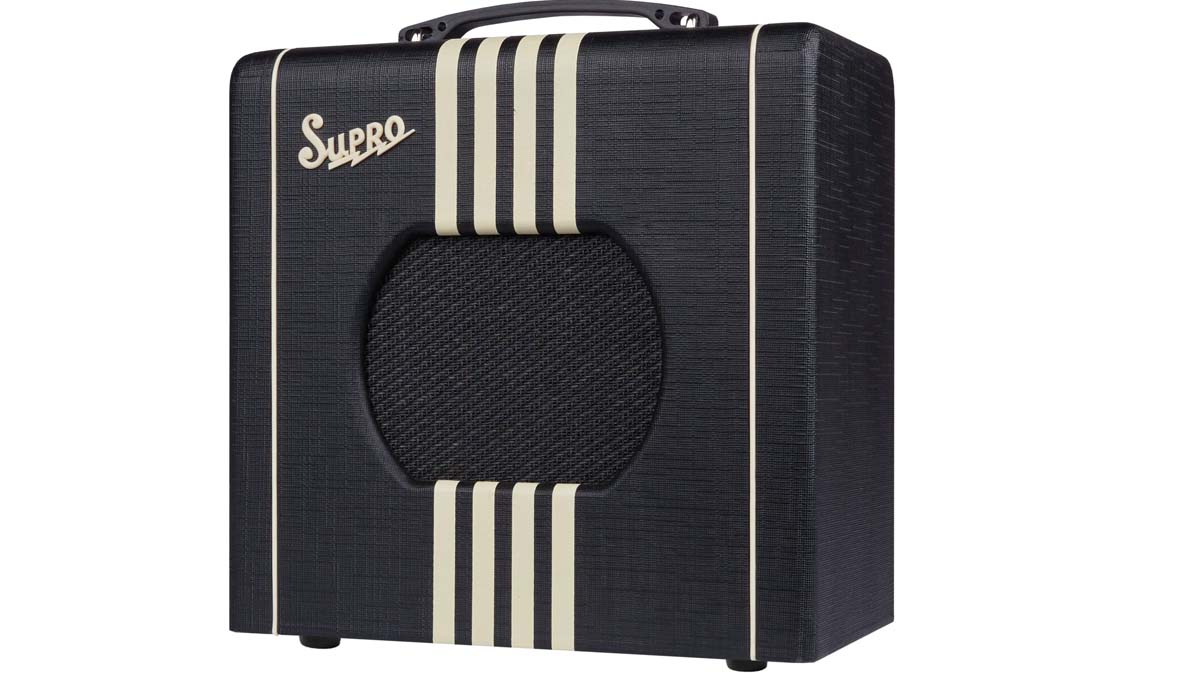
2. Supro Delta King 8
Our expert review:
Specifications
Reasons to buy
Reasons to avoid
Featuring a similar retro aesthetic to Supro’s Blues King 12, albeit with go-faster racing stripes, the Delta King 8 is a single-channel Class A tube combo that’s all teeth, grit and heat. However, at a single-watt, it gives up that rabble-rousing gain at manageable volumes, and as such makes an ideal roommate.
The Delta King 8 has a single 8” speaker that’s driven by a single 12AU7 power tube, with a footswitchable FET boost for an extra ladle of gain. The control panel has a volume knob, a boost toggle switch, tone and master volume controls, plus your standby and power switches.
What it lacks in headroom, it makes up for in the sweetness of its cleans. There’s no onboard reverb, which might make some players consider its larger 1x10 5W sibling, but it’ll take a reverb pedal nicely, and throwing a little overdrive or fuzz in front of it will do a great job of provoking its more animalistic side. Best of all, it records well. If you have a mic, great; if not, Supro has provided a very respectable line-out for sending your signal direct. You can also send this signal to another amp, using the Delta King 8 as an outboard preamp/overdrive unit, which could be just the thing to awaken an uncooperative amp onstage or in the studio.
Some amps are about stacking the features high. The Delta King 8 is all about the simple pleasures in life. Cranking up your amp, feeling the heat, rocking out – and being deadly serious about having a fun time.

Specifications
Reasons to buy
Reasons to avoid
Yamaha pioneered the idea of the at-home amplifier in 2011. No, not a practice amp, not a stage/studio workhorse, but a ‘third amp’ – a desktop amplifier designed to go anywhere, with digital modelling voodoo under the hood enabling you to do anything with it. In super-quick time, the THR series became a well-respected platform for serious tone exploration, capable of sending your musical genius easily and conveniently to your DAW via USB.
The THR30II ups the ante. As well as offering around three times as many sounds as the original models, this amp can run on its rechargeable battery – albeit at half-power. If you really have an aversion to cables, get yourself a Line 6 Relay G10T transmitter (sold separately) and you can walk around uninhibited. Where you do this is your own business, but you could, of course, do it onstage if you were to send the signal direct to the PA speakers.
It’s more likely, though, that the THR30II will become the high-functioning practice, writing and recording tool in your life. It’s light enough to carry around, its neat home audio aesthetic means you can leave it in the sitting room without it drawing attention to itself, and – like the others in the THR series – it ships with Cubase AI/Cubasis LE software.
There’s Bluetooth for streaming external audio, an aux-in, a guitar tuner, quality effects, and five amp models to play with (plus more when you combine it with the accompanying iOS/Android app). You can even save your favourite sounds to presets – and with Yamaha's Virtual Circuit Modelling tech on board, there are plenty of sounds worth saving.
Read the full Yamaha THR30II Wireless review

4. Friedman BE-Mini 30-Watt Head
Our expert review:
Specifications
Reasons to buy
Reasons to avoid
We all know what Dave Friedman’s amps are all about, and if you’re a fan of classic Marshall drive tones, then surely at one point or another you’ll have taken a couple of spoons of Deflatine to address the build-up of G.A.S. associated with thinking about Mr Friedman’s deluxe take on that particular tone paradigm. Trouble is, they’re kinda pricey – but what if we could get a portable mini-head that was all solid-state but nonetheless presented a convincing take on the Friedman BE-100 amp and BE-OD overdrive pedal? And what if this amp cost just over 300 bucks? Folks, your ship has come in.
The BE-Mini shares the same post-Marshall Plexi aesthetic of Friedman’s flagship models. Its control panel has a three-band EQ, presence, volume and gain controls, with tight and cut switches for applying quick global tweaks to your tone. There are two speaker outputs and a series effects loop to bring your pedalboard to the party.
At any volume, the tones are exceptional. It’ll handle Frusciante-esque cleans, Led Zep bark, and Judas Priest-style high-gain tones – not bad for a product that weighs under 2kg. What a fun little amp for small gigs, for practising, for scratching that Friedman itch without dropping pro money on a high-end product that you’ll never get the opportunity to play loud anyway.
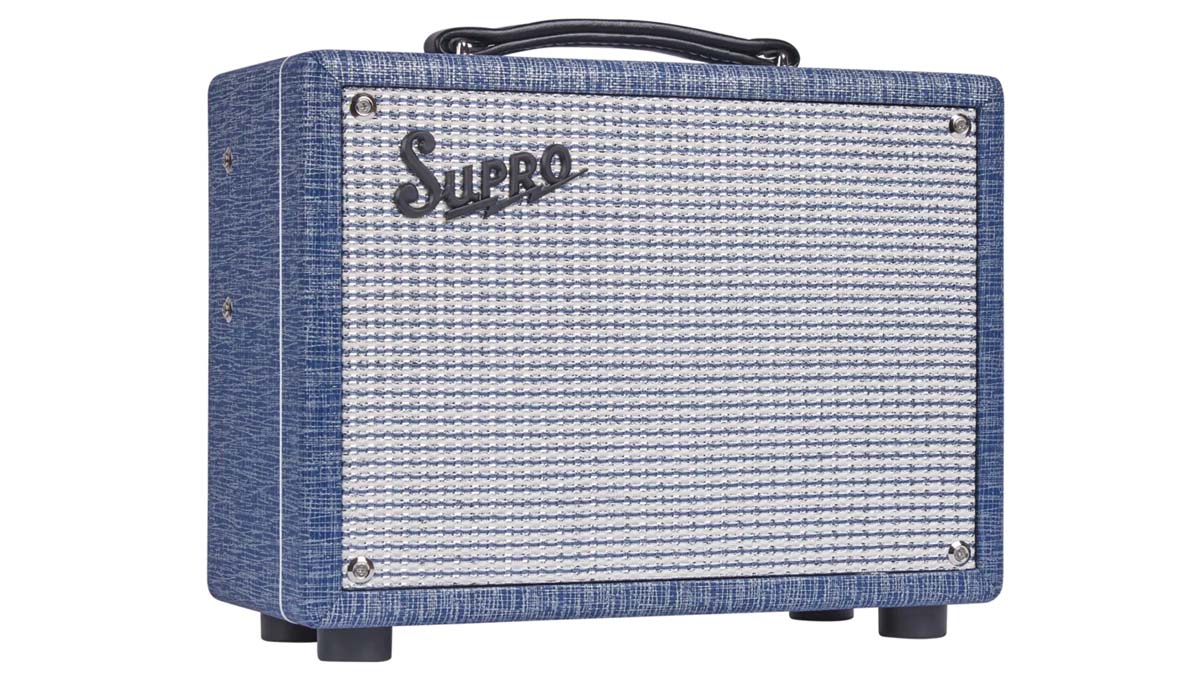
5. Supro ’64 Reverb
Our expert review:
Specifications
Reasons to buy
Reasons to avoid
The ’64 Reverb 1x8 is cut from the same cloth as its high-end siblings. It has the Blue Rhino Hide Tolex, a Jensen speaker, tube-driven spring reverb, a hefty price tag… It simply takes that retro DNA and presents it in a smaller package. At 5W, it has enough juice to play a small gig, it’s perfectly sized for recording, while the master control makes it a more than attractive proposition for the home, too.
There are two inputs, Hi and Lo, with Lo offering a little more headroom, and the control setup is simple, with knobs for gain, master volume, bass, treble and reverb. The reverb is footswitchable, and on the rear of the amplifier there are three preamp-tube-driven line outputs for sending to another amplifier, or to a desk/DAW for recording, with the Mix output accompanied by a variable level control.
It’s certainly not a practice amp, but you’d want to do a whole lot more practising if your amplifier sounded like this. The single 6V6 has a reverse Hulk thing going on; you will like it when it gets angry. The tone profile is classically American, a slightly scooped ‘smile curve’ with a solid bottom end for an eight-inch speaker, and a forensic level of detail and treble. It’s superbly dynamic and touch-sensitive, and if you’re looking for a compact combo for small gigs and recording, this is an incredible option.

Specifications
Reasons to buy
Reasons to avoid
A broad-shouldered desktop amplifier with a breathtaking array of features, the Katana-Air was the first fully wireless amp at the time of its launch, and it remains a market leader – its COSM technology endowing it with a quality that positions it alongside fellow desktop heavyweights the Positive Grid Spark and the Yamaha THR series.
This being a Boss design, you’ll find a comprehensive suite of the manufacturer’s classic stompbox models, with deep cuts such as the discontinued SG-1 Slow Gear alongside such pedalboard staples as the BD-2 Blues Driver and the OD-1 Overdrive. But there are plenty of non-Boss alternatives, with the likes of Marshall’s GV-2 Guvnor overdrive and the ProCo RAT distortion among its effects library. The risk of option paralysis is multiplied when you consider the amp models available to you – but at least you won’t get bored of your tone.
Hooking the Katana-Air up with Boss’s Tone Studio iOS/Android amp allows for deep editing, downloading presets and jamming along to external audio. If that jamming becomes a little too enthusiastic, help is at hand: use the wireless connector to take your cable out of the equation, and play your guitar untethered. Load it up with eight AA batteries and you can take the Katana-Air anywhere. Ever wondered how it would feel to play the November Rain solo at the top of a mountain? Well, you can. Just check the weather before you set off. Under continuous use, you’ll get up to 10 hours of play from the batteries.
Read the full Boss Katana-Air review

7. Blackstar HT-1R MkII
Our expert review:
Specifications
Reasons to buy
Reasons to avoid
The HT-1R MkII covers a lot of ground for a single-watt tube combo. It has two footswitchable channels, with two voicings per channel, and a new and improved digital reverb. There’s also an emulated mini-jack headphones/line output and a USB output.
But perhaps best of all is Blackstar’s ISF (Infinite Shape Feature), a single knob that’s like a transatlantic control, giving the HT-1R MkII a US tone profile at one extreme – tight bottom end, pronounced highs – and a British one at the other.
The tones are superb. The new reverb algorithm adds depth and space. The cleans are very convincing, delivering a nice amount of spank with single-coils, and an impressive amount of bottom end for a 1x8. The overdrive is hot and crispy, and there’s a wealth of gain for aspiring metal heads to dig into. Just consult your friendly ISF control to dial in your desired flavour of grind.

8. Roland CUBE-10GX
Our expert review:
Specifications
Reasons to buy
Reasons to avoid
The CUBE-10GX is one of Roland’s best-loved guitar amps, and with good reason. For a start, it looks fantastic, rocking an industrial aesthetic that wouldn’t look out of place in The Matrix. Thanks to Roland and Boss’s proprietary COSM modelling tech, it has Clean, Crunch and Lead amp models as standard. These exceed expectations for the price, but can be easily swapped out via the CUBE KIT app if you want to experiment.
Ideal for practice, the CUBE-10GX features a three-band EQ that gives you comprehensive control over your tone before you even arrive at its complement of effects. We love digital modelling amplifiers for the great array of tone options they present, and it will never not be thrilling being able to go from a spring-reverb-drenched spaghetti western tone to a scooped, high-gain Pantera chug from one boxy little amp.
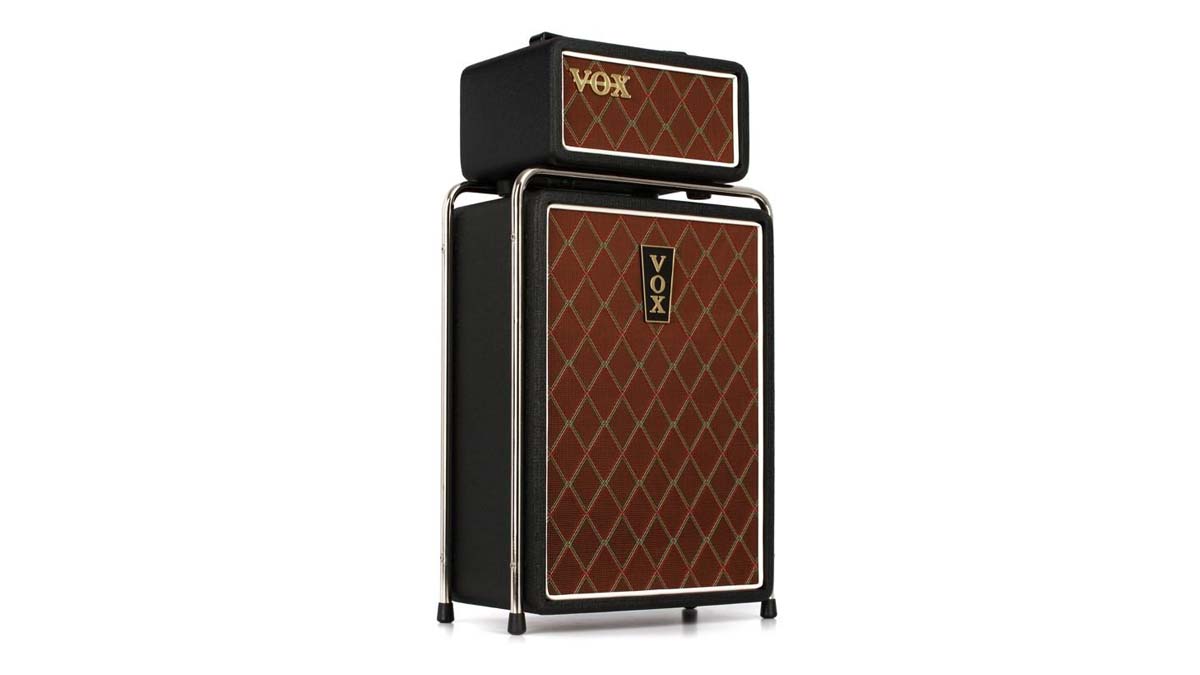
9. Vox MSB25 Mini Superbeetle
Our expert review:
Specifications
Reasons to buy
Reasons to avoid
OK, this is something of a left turn as far as small amps go – there are definitely more portable options in this guide, and good luck fitting this behind the TV. But as an example of a great idea scaled down to make it more manageable in terms of size, volume and price, the Mini Superbeetle is hard to beat.
A 25W solid-state head and matching cabinet loaded with a 10” Celestion G10 speaker, it references the treble-forward chime of the Vox AC-100 that helped the Fab Four summon enough stage volume to drown out the screams of their fans. Hopefully, you won’t have that problem at home, where the Mini Superbeetle makes perfect sense, its Korg NuTube-driven preamp liberally sprinkling your tone with magic analogue mojo, giving up crunch at friendly volumes.
But having purchased yourself a mini-stack as cool as this, why not take it to the stage? The Mini Superbeetle format is fine for small shows, and easily expandable if the 1x10 cabinet isn’t cutting it – you can incorporate up to a 4x12 into the rig. Hey, it’s only a thought.
Sticking with the 1x10, though, you have a very respectable tone, with digital reverb and NuTube-driven tremolo adding depth, space and movement to your sound. You’ll have little difficulty dialling in the trebly jangle of Lennon/Harrison – it covers a lot of the sweetest tones from that era. This being the 21st century, however, it’s nice to know that it takes pedals well, too.

Specifications
Reasons to buy
Reasons to avoid
Are you looking for an amp with options? Channel blending, footswitchable effects loops and onboard cab emulations? Sorry, but the ’57 Custom Champ is for those who place a premium on vintage tweed tones and won’t think twice about paying the eye-watering price for just five measly watts, safe in the knowledge that they’ve got a hand-wired reissue of one of Fender’s all-time greats.
The Champ looks the business, its finger-jointed solid pine cabinet covered in period-correct livery – cotton twill, gold/brown grille cloth, the narrow panel badge on the front. Inside the cabinet, there’s an eight-inch Weber speaker, while the top panel features one solitary control – a chickenhead knob that sets the volume from zero to 12 – along with two inputs.
As for the tones, they’re reference-quality for American electric guitar. The overdrive positively sings when you work that single 6V6 tube hard. Some players might find it heavy on the mids, but in a live mix or on record the Champ lands its punches. Just get yourself a quality outboard reverb and you’ll have a lot of fun playing raunchy blues and classic rock.
The price is steep but not as steep as sourcing a vintage model in usable condition. Besides, the Champ has fewer rounds under its belt, and is sure to be a less fragile beast than a tube amp nearly old enough to collect its pension. It’s only got one move but it’s a knockout.
Read the full Fender ’57 Custom Champ review

11. Line 6 Spider V 20 MkII
Our expert review:
Specifications
Reasons to buy
Reasons to avoid
A trailblazer in digital guitar amplification, Line 6’s modelling technology makes practice amps such as this MkII Spider V 20 some of the best on the market.
There’s something for players of all abilities here, but what a boon it would be for a beginner to learn how to master the oft-radical dynamics of electric guitar on an amp such as this. There’s a wealth of high-quality amp, cabinet and mic emulations, and enough digital effects to bogart the summer holidays chasing tones down the rabbit hole.
The USB connections and said cab and mic sims also help you to record your playing – a vital stage in any player’s development. And should inspiration fail you for some reason, you can use the accompanying app to access some pro-designed presets and get you back in the game.
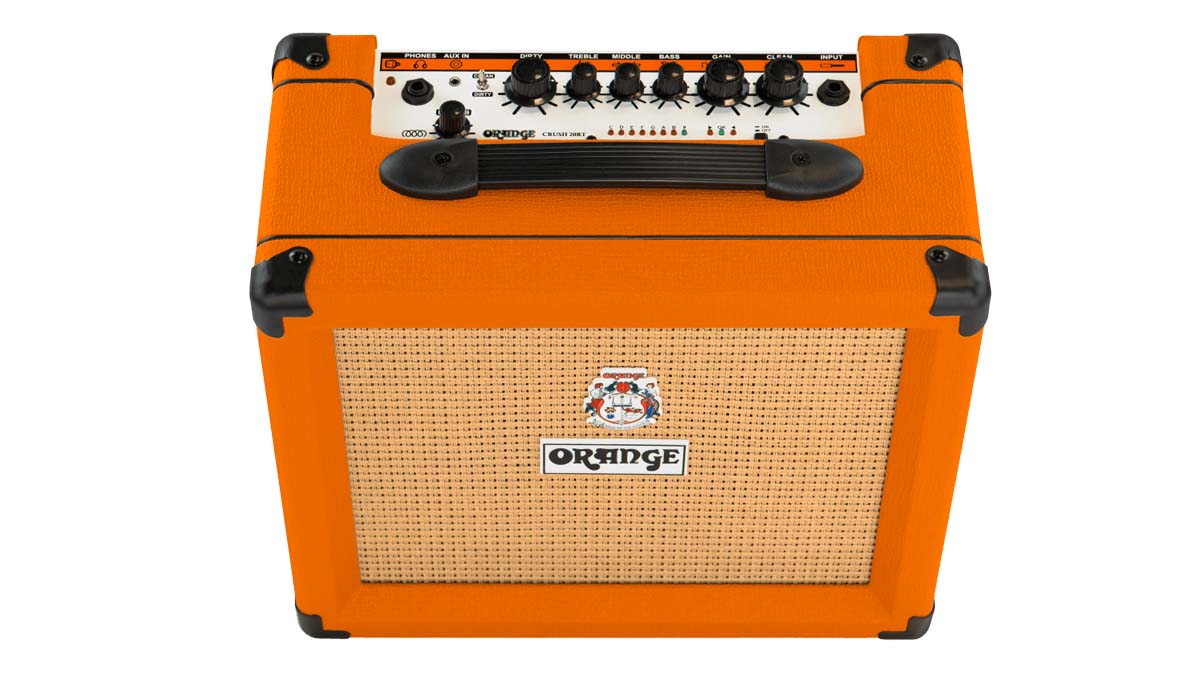
12. Orange Crush 20RT
Our expert review:
Specifications
Reasons to buy
Reasons to avoid
Orange’s Crush amps might just be the finest solid-state combo series for overdrive addicts. These compact combos use Orange’s four-stage preamp to write the chapter on affordable, dynamic drive in the British amp titan’s storied history. The drive tones are everything you’d want from an Orange amp – they’re dynamic, lush, analogue and moreish.
Orange makes a 1x6 version, too, but the 20W Crush 20RT strikes the best balance between size and sound. Modelling combos might offer you more features, but there’s an analogue purity to the design that makes these eminently affordable amplifiers a sure thing.
Here we have a simple two-channel setup, each channel sharing a responsive three-band EQ. There’s an onboard reverb, an aux-in for playing with external audio, plus a chromatic tuner nestled on the control panel to make sure you’re in tune before cranking the volume up. Orange’s Voice of the World speaker is a more than capable messenger, and if it’s getting late you can always switch to the headphones output, which is equipped with a cab sim of an Orange 4 x 12” cabinet, ensuring that silent practice has some depth and life to it.
Best small guitar amp: Buying advice
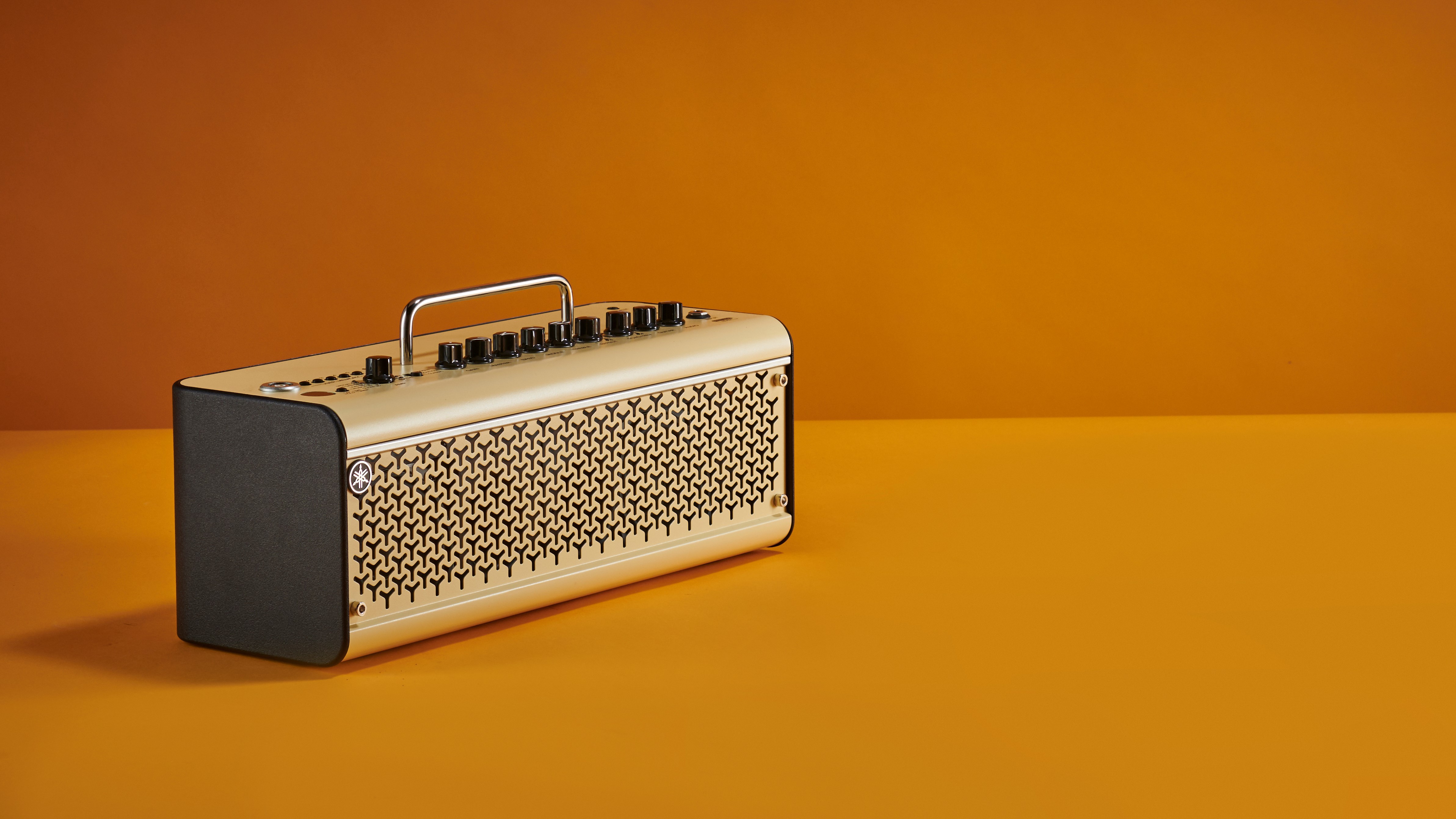
What makes a great small guitar amp?
MusicRadar's got your back
When it comes to finding an amplifier that’s compact and modestly powered, you have a lot of choice. As with the evolution of the guitar amp, the small amplifier market has been radically augmented by digital modelling technologies. And yet, when it comes to tube amps – the oldest amp tech we have on the market – small is and always has been beautiful.
Where we could have a large, 100W digital modelling combo and make it sound great in a domestic setting – i.e. not pushing air around the room and shaking the windows with volume – tube amps are a little different. To get them into the sweet spot, you’ve got to be working those power tubes, whereupon the magic happens, the natural compression and harmonic richness bears fruit and you get what you paid for.
When recording or just playing for fun, however, that’s often too much volume, with 5W or fewer offering a more manageable performance for most settings. At 5W, small gigs are still on the cards, and we’d argue that you could gig with a single-watter if you threw a mic in front of it.

Solid-state amplifiers helped solve the volume conundrum. Using transistors instead of vacuum tubes, these could offer a similar overdrive profile at low volumes as they did when cranked up. And while they’ve been superseded in a lot of ways by digital modelling technologies – trapped between the two worlds of tube purists and digital enthusiasts – a great solid-state amp design remains a great amplifier.
What the solid-state and tube amps lack, however, is options. Today’s guitarist has many of them, and the likes of Boss, Yamaha, Line 6 and the new kid on the block, Positive Grid, are using powerful digital modelling technologies to increase the functionality of our guitar amps. That they can do so digitally means they don’t take up as much space – and no more is that more dramatically observed than in the evolution of the desktop amp.
Often, these future-forward units take a leaf out of home audio design. Just look at Yamaha’s THR series. Viewed from the front, these amps look like hi-fi equipment, and as such won’t look out of place in your front room. But look at the control panel and you have a very familiar set of knobs and switches, albeit with some extra buttons for presets, effects, various amp models and features such as tuners.
With digital modelling amps, however, the accompanying apps can extend their functionality, allowing for deep editing of the amplifier’s sounds and unlocking new features such as Bluetooth audio streaming and jam track creation. Not bad for a unit that can sit on top of your desk.
Some practice amps make our best small guitar amp list, too, but they’re not like practice amps of old. Again, digital modelling technology has changed what we expect from them.
Find out more about how we test music gear and services at MusicRadar.
Want all the hottest music and gear news, reviews, deals, features and more, direct to your inbox? Sign up here.
Jonathan Horsley has been writing about guitars and guitar culture since 2005, playing them since 1990, and regularly contributes to MusicRadar, Total Guitar and Guitar World. He uses Jazz III nylon picks, 10s during the week, 9s at the weekend, and shamefully still struggles with rhythm figure one of Van Halen’s Panama.
